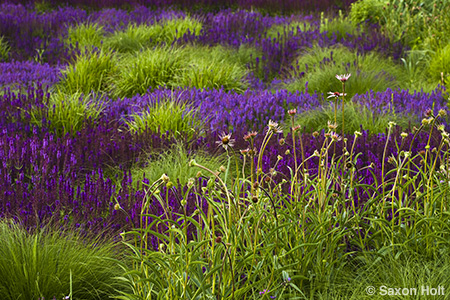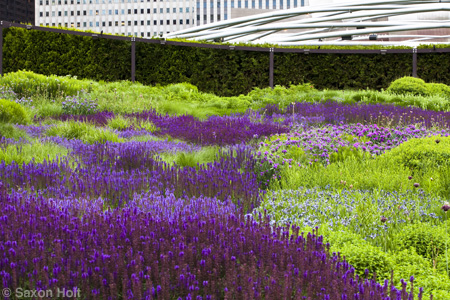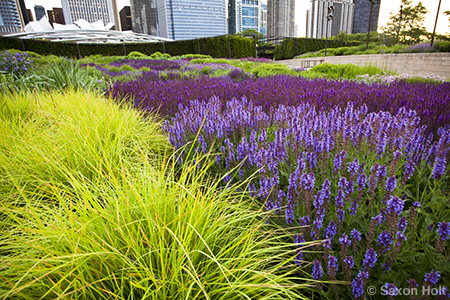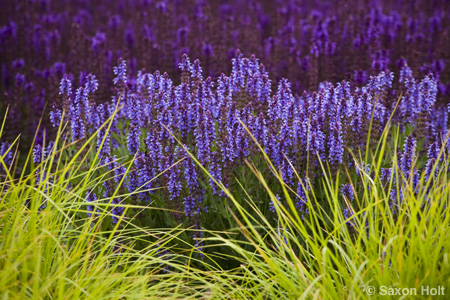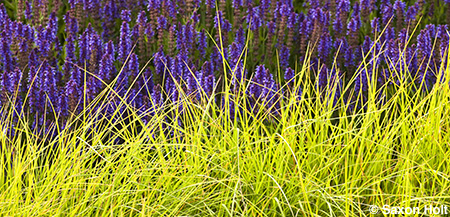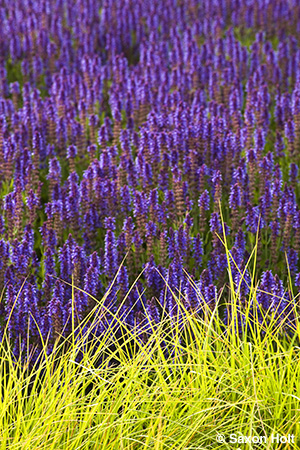One of my first first lessons to students who take my garden photography workshops is about “seeing”. If you don’t stop to think what you are seeing, what it is that excites you about a garden, then you will end up with a photo that will be little more than literally, a snapshot of time. Let’s take this lesson to Chicago.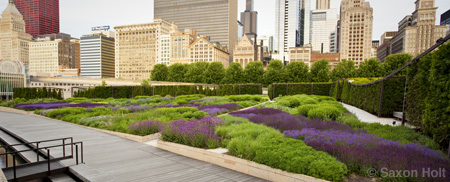
When you are in a fabulous garden you can start hyperventilating over beauty, not knowing where to start. It happens to everyone. It happened to me in the Lurie Garden in Chicago’s Millenium Park.
In the middle of downtown, at the edge of Lake Michigan, the City of Chicago has created the magnificent Millenium Park, where is found the Lurie Garden, a rooftop garden over parking garages, an homage to native plants and prairies. It is by no means a re-creation of a prairie, nor is it meant to be. It is an art installation, and since it sits right next to The Chicago Art Institute I am sure I am not the first to make the comparison. The artist of this masterwork is plantsman Piet Oudolf, a Dutchman who went plant hunting in Illinois prairies for inspiration and plant material.
The garden is divided into two sections, one for shade one for sun; and it is the sunny “Light Plate” that stunned me. I had seen the garden in the fall while working on The American Meadow Garden, a time when the garden is dominated by grasses and seed heads. I was not prepared to see these colors of early summer. Oh how I wished I had seen it before I completed work on that book. I was on photo overwhelm as soon as I walked in.
This view (above) is a purple river of mixed Meadow Sages (Salvia x sylvestris) that arcs back past Amsonia and Tradescantia to the entrance you see in the first, panoramic view at the top of this post. This ribbon was the first thing I “saw” as I wondered how I would catch my breath, how to stop hyperventilating, and make some photographs to do the garden justice.
The artful block plantings and impeccably placed groups of these sun loving perennials offer ample compositions, but rather than snap away at everything when faced with too many choices, stop and simplify. Think about what is really exciting you. What are you really seeing ?
For me, on that June morning at 5:30 a.m. when I knew I would only have a couple hours of good light, the chartreuse foliage of the Moor Grass (Sesleria autumnalis) became my theme. I look for grasses in every garden I photograph, especially ones that are meadow and prairie inspired, and I had never seen this Sesleria used so abundantly, its own foliage color used so effectively. There are all kinds of photos to be had.
Let’s analyze how to take advantage of that foliage on this day in this garden and work on one idea, to make the camera lie to tell a story, to slow down and “see” when photo overwhelm overcomes us. Stay in one area and work it. Allow your self to “see”.
This is a very wide angle view from a pathway that crosses the middle of the Lurie Garden:
From here, with a 22 mm lens close to the ground and putting the camera on my tripod, I can carefully compose so that I have shapes, colors, lines, and contrasts that fill the frame and tell a story. The river of Sages seem huge, the color contrasts with the Moor grass breathtaking. We see the city, the wide lens shows the skyline, and the lens brings in the whole width of the garden.
From almost the same point I begin to use other lenses as I “see” other photos. Note in the upper left third where the sage and grass converge to meet more of the garden ? Let’s move the tripod a bit to the left over the grass and go there:
This is now a 70 mm focal length, almost a “normal” lens for my full frame 35mm camera. We get much more of a tapestry effect. The Sesleria foliage is THE story and the blocks of Oudolf’s perennial plantings become part of the design story. (Remember this view for later – note the Alliums popping up on the left to orient yourself). What else to see ? Now I look around with a telephoto lens.
When I moved to be overtop of the Sesleria and put on a longer lens, I no longer saw the lighter, blue Meadow Sage that we saw in the wide view. The river of sage was no longer part of the story; but it’s still beckons and I want to show the mix of cultivars that make the ribbon. So with the telephoto lens:
The 200 mm lens really helps isolate items in a photograph. Planes of shapes and color stack up, focal points become very tight to make a very graphic composition. Working with these few elements I now try different cropping on the same theme:
I envisioned this panorama view in camera and cropped it when I got home. The blue and yellow seem to fit together like pieces of a puzzle.
Whenever I see a strong composition I make sure I take a vertical too:
Now back off again. I stop to catch my breath again. I look back at the garden again; and drink it in. Again. Sigh.
What an amazing place. I close my eyes, block out the city street noise, and listen to blackbirds. The light is still holding with some unexpected morning overcast. Should I push on to other parts of the garden ? No, here in the midst of these colors and shapes I bet there is more: I keep finding new compositions as I relax and”see” more clever plant compositions.
Recall those Alliums a few photos above ? They seem almost insignificant there; but even small elements can be important tools to effective composition, as we see next:
It is a fine composition without the wild onions but their small but robust vertical accents seem to bring the photo alive. I feel a vibrancy to the meadow, a wildness that seems natural even though my brain tells me it is a contrived garden. I love this shot.
I hope to get at least one great shot from every shoot, one keeper that years later define my feelings. In a great garden when the light is good I expect myself to get several, but it starts with one. It can be overwhelming, but the trick is to slow down, begin to “see” one element, recognize what is turning you on; work it, and don’t try to do too much at once.
I think I got a good few in the Lurie Garden. Only time will truly tell. Here is an album of 40 photos from the Lurie Garden on my PhotoBotanic Archive and a YouTube video.
Sigh. What a great garden.

